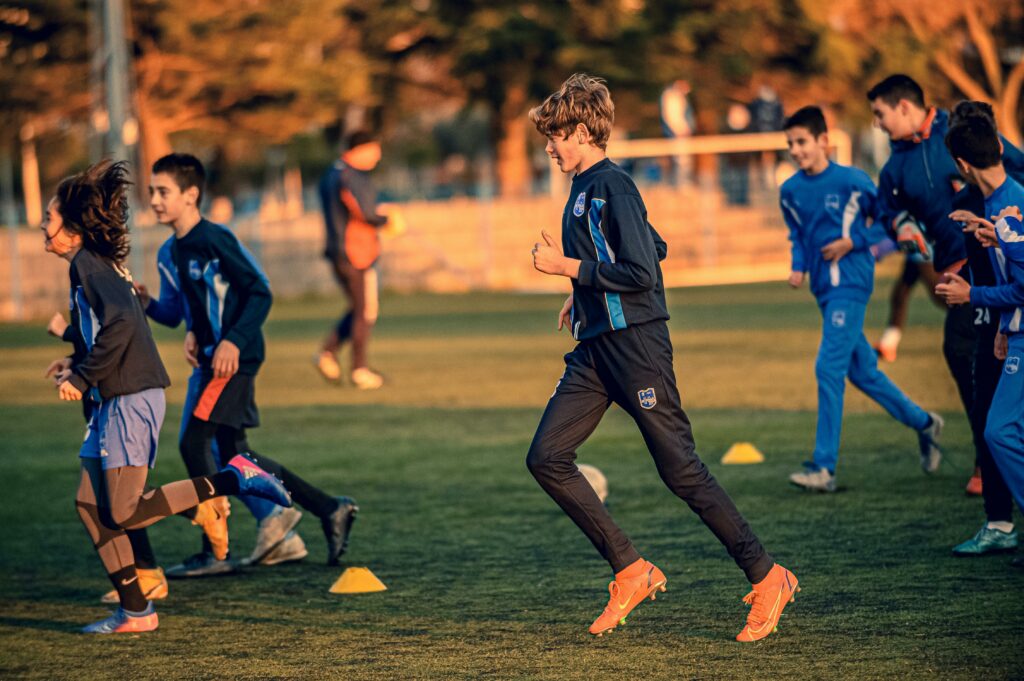Strength training is an essential component of athletic development for young athletes. When done correctly, it can enhance performance, prevent injuries, and build a foundation for lifelong fitness. As a parent, understanding the nuances of strength training for your child’s specific sport can make a significant difference. Here’s what you need to know to ensure your young athlete gets the most out of their training safely and effectively.
Understanding the basics of strength training for young athletes
Strength training involves using resistance to increase muscle strength, endurance, and power. For young athletes, it’s crucial to focus on proper technique and gradual progression to avoid injury.
Age-appropriate strength training
It’s important to tailor strength training to your child’s age and development stage.
- Children under 12: Focus on bodyweight exercises and developing fundamental movement skills. Activities like push-ups, pull-ups, bodyweight squats, and lunges are excellent for this age group.
- Adolescents (12-18): They can begin incorporating more structured strength training with light weights and resistance bands, progressing to heavier weights as they mature and their technique improves.
Choosing the right program
Selecting a strength training program should be tailored to the sport your child participates in:
- Soccer: Emphasize lower body strength, agility, and endurance. Exercises like squats, lunges, and plyometrics are beneficial.
- Basketball: Focus on explosive power, vertical jump, and upper body strength. Incorporate exercises like box jumps, bench presses, and medicine ball throws.
- Swimming: Develop overall body strength with a focus on shoulders and core. Use resistance bands, pull-ups, and planks.
- Gymnastics: Prioritize core strength, flexibility, and upper body strength. Bodyweight exercises, resistance bands, and flexibility drills are key.
Tips for safe and effective strength training
When it comes to strength training, safety and effectiveness go hand in hand. Here are some essential tips to ensure your young athlete benefits from their training:
- Start with a warm-up: Ensure your child warms up properly to prepare their muscles and reduce the risk of injury.
- Focus on form: Proper technique is crucial. Consider hiring a qualified trainer to teach your child the correct form.
- Progress gradually: Increase the weight and intensity gradually to allow the body to adapt and grow stronger without overloading it.
- Balanced training: Incorporate exercises that work all major muscle groups to ensure balanced strength and prevent imbalances.
- Rest and recovery: Allow adequate rest between training sessions. Young athletes should have at least one to two days of rest per week to recover.
What to avoid?
While there are many positive aspects to strength training, there are also some pitfalls to avoid:
- Avoid heavy lifting too soon: Heavy lifting should only be introduced once your child has mastered the basics and has demonstrated proper form.
- Avoid high-impact exercises: High-impact, repetitive exercises can be harmful to growing joints and bones. Focus on low-impact, controlled movements.
- Avoid training without supervision: Always ensure your child is supervised by a qualified adult, especially when lifting weights.
Encouraging a positive mindset
A positive mindset is just as important as physical training. Here’s how to foster a positive attitude in your young athlete:
- Set realistic goals: Help your child set achievable goals to maintain motivation and track progress.
- Promote consistency: Encourage regular training sessions rather than sporadic, intense workouts.
- Celebrate progress: Recognize and celebrate milestones to keep your child motivated and engaged.
Conclusion
Strength training can be incredibly beneficial for young athletes when approached correctly. By understanding the specific needs of your child’s sport, focusing on proper technique, and ensuring a balanced, gradual progression, you can help your young athlete build a solid foundation for athletic success. Remember, the goal is to promote a lifelong love for fitness while enhancing their performance and preventing injuries.
To know more about this topic consult: the National Strength and Conditioning Association’s website (nsca)
Disclaimer: The content provided here is for informational purposes only and is intended to inspire and guide parents in understanding strength training for young athletes. It is important to prioritize your child’s health and safety above all else. Before implementing any strength training program or making significant changes to your child’s exercise routine, it is recommended to consult with a qualified medical or fitness professional. They can provide personalized advice and ensure that the training regimen aligns with your child’s specific needs, abilities, and overall health.

